Gardeners Woodside: Your Comprehensive Guide to Thriving Green Spaces
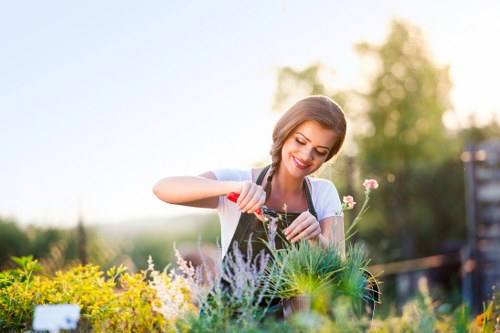
Welcome to Gardeners Woodside, your go-to destination for all things gardening in the Woodside area. Whether you're a seasoned gardener or just starting, our resources and services are designed to help your garden flourish.
At Gardeners Woodside, we understand the unique challenges and opportunities that come with gardening in this region. From climate considerations to soil quality, our expertise ensures that your garden thrives all year round.
Join us as we explore the various aspects of gardening, from selecting the right plants to maintaining a sustainable and beautiful outdoor space.
Understanding the Woodside Climate
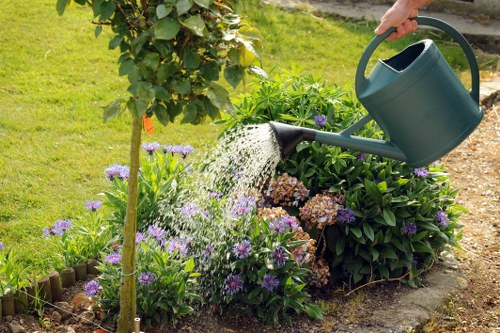
One of the key factors in successful gardening is understanding the local climate. Woodside experiences a Mediterranean climate, characterized by warm, dry summers and cool, wet winters. This climate influences the types of plants that thrive here.
Choosing plants that are well-suited to Woodside's climate can lead to a more resilient and lower-maintenance garden. Native plants often require less water and are more resistant to local pests and diseases.
Additionally, understanding seasonal changes helps in planning your garden's layout and selecting plants that bloom at different times, ensuring year-round color and interest.
Soil Composition and Preparation
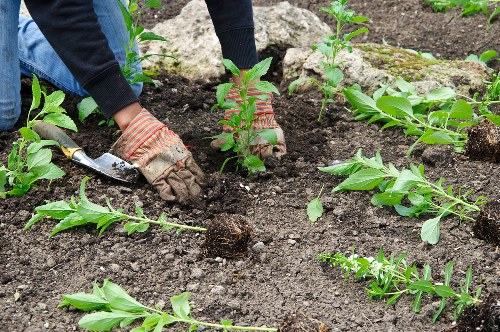
The soil in Woodside varies in composition, but generally, it is well-draining with a mix of sand, silt, and clay. Before planting, it's essential to test your soil to determine its pH and nutrient levels.
Amending the soil with organic matter like compost can improve its structure and fertility. This not only benefits plant growth but also enhances the soil's ability to retain moisture.
Proper soil preparation lays the foundation for a healthy garden, making it easier for plants to establish strong root systems and access necessary nutrients.
Plant Selection Tips
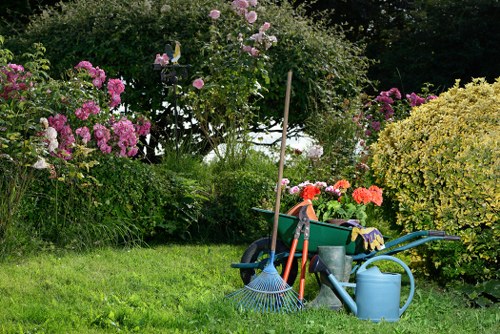
Selecting the right plants is crucial for a thriving garden. In Woodside, consider drought-tolerant species that can handle the dry summers. Examples include lavender, rosemary, and various succulents.
Incorporate a mix of perennials and annuals to ensure continuous blooming and interest throughout the seasons. Perennials provide long-lasting structure, while annuals offer vibrant, seasonal color.
Don't forget to include native plants, which support local wildlife and require less maintenance. These plants are adapted to the local environment, making them more resilient to pests and weather changes.
Garden Design and Layout
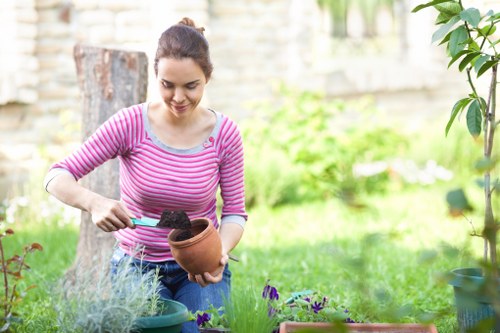
A well-designed garden layout enhances both the aesthetics and functionality of your outdoor space. Start by assessing the area you have, taking note of sunlight exposure, wind patterns, and existing structures.
Create zones within your garden for different purposes, such as dining areas, relaxation spots, and vegetable patches. This organization helps in managing the space effectively and makes gardening tasks more manageable.
Incorporate pathways and borders to guide movement and define different sections. Using mulch or gravel can help in maintaining cleanliness and reducing weed growth.
Essential Gardening Tools

Having the right tools is essential for efficient and enjoyable gardening. Basic tools include:
- Hand Trowel: Ideal for digging small holes and transplanting seedlings.
- Pruning Shears: Used for trimming and shaping plants.
- Garden Fork: Helps in aerating the soil and removing weeds.
- Watering Can or Hose: Essential for maintaining proper hydration of plants.
- Gloves: Protect your hands from thorns, dirt, and blisters.
Investing in quality tools can make a significant difference in the ease and results of your gardening efforts.
Watering Techniques

Efficient watering is crucial, especially in areas like Woodside where summers can be quite dry. Drip irrigation systems are highly effective as they deliver water directly to the plant roots, minimizing evaporation and water waste.
Watering in the early morning or late evening helps reduce water loss due to evaporation and prevents fungal diseases that can occur from water sitting on leaves during the heat of the day.
It's also important to adjust your watering schedule based on the weather and the specific needs of your plants. Overwatering can be just as harmful as underwatering, so monitoring soil moisture is key.
Pest and Disease Management

Protecting your garden from pests and diseases is a constant challenge. Regular inspection of plants can help catch problems early before they spread.
Using organic pesticides and natural predators like ladybugs can control pest populations without harming beneficial insects or the environment.
Maintaining good garden hygiene by removing dead leaves and debris reduces the risk of diseases. Additionally, proper spacing and air circulation around plants prevent the spread of fungal infections.
Seasonal Gardening Tips

Gardening tasks vary with the seasons. In spring, focus on planting new seeds and preparing beds for summer. Summer requires diligent watering and weeding to keep plants healthy.
Fall is the time for harvesting and preparing plants for the winter months. Adding compost and mulching during this period can improve soil quality for the next planting season.
Winter may involve pruning and protecting sensitive plants from frost. Planning for the upcoming year during winter ensures a productive gardening season ahead.
Sustainable Gardening Practices

Embracing sustainable practices not only benefits the environment but also enhances the health of your garden. Composting kitchen scraps transforms waste into valuable nutrients for your plants.
Using rain barrels to collect rainwater reduces reliance on municipal water sources and provides a natural water supply for your garden.
Planting native species and creating habitats for beneficial insects supports local biodiversity and creates a balanced ecosystem in your garden.
Local Flora and Fauna in Woodside

Woodside is home to a diverse range of flora and fauna. Familiarizing yourself with local plants can enhance your gardening experience and support native wildlife.
Trees like eucalyptus and acacia are common, providing shade and habitat for birds and insects. Flowering plants such as kangaroo paws and grevilleas add vibrant colors and attract pollinators.
Wildlife like birds, bees, and butterflies play a vital role in pollination and maintaining the health of your garden. Creating a welcoming environment for these creatures can lead to a more productive and lively garden.
Gardening Events and Community in Woodside

Participating in local gardening events fosters a sense of community and provides opportunities to learn from fellow gardeners. Workshops, plant swaps, and garden tours are excellent ways to gain new insights and inspiration.
Joining gardening clubs or online forums specific to Woodside allows you to share experiences, seek advice, and collaborate on projects. These connections can enhance your gardening knowledge and make the hobby more enjoyable.
Community gardens are another great avenue for engaging with other gardeners. They offer shared spaces for growing plants, exchanging tips, and building lasting relationships.
Gardening Resources and Support

Access to reliable gardening resources is essential for success. Gardeners Woodside provides a variety of tools, guides, and expert advice to help you navigate the challenges of gardening.
Our library includes information on plant care, pest control, soil improvement, and more. Additionally, our team of gardening experts is available to answer your questions and offer personalized guidance.
Online resources such as blogs, video tutorials, and forums can further support your gardening journey, offering diverse perspectives and solutions to common issues.
Gardening for All Ages

Gardening is an activity that can be enjoyed by people of all ages. For children, it provides a hands-on learning experience about nature and responsibility. Introducing simple tasks like planting seeds or watering plants can spark their interest in the natural world.
Adults can find gardening to be a relaxing and rewarding hobby that promotes physical activity and mental well-being. It offers a creative outlet and a sense of accomplishment as you watch your plants grow and thrive.
Gardening in senior years can also be beneficial, providing gentle exercise and a way to stay connected with the outdoors. Raised beds and ergonomic tools make gardening accessible and enjoyable for everyone.
Indoor Gardening Options

If outdoor space is limited, indoor gardening offers a viable alternative. Houseplants not only enhance the aesthetic appeal of your home but also improve air quality and create a calming environment.
Common indoor plants for Woodside residents include snake plants, pothos, and fiddle leaf figs. These plants are easy to care for and adapt well to indoor conditions.
Using containers and vertical gardening techniques can maximize space and allow for creative displays. Indoor gardening also provides an opportunity to experiment with different plant varieties and arrangements.
10 Best Areas Near Woodside for Gardening Enthusiasts

Woodside is surrounded by several charming areas that are perfect for gardening enthusiasts. Here are some of the top nearby locations:
- Forest Hills: Known for its lush parks and community gardens, Forest Hills is ideal for those who enjoy large, open green spaces.
- Kings Park: Offers extensive walking trails and a variety of plant species, making it a favorite spot for botanical enthusiasts.
- Sunnyvale: With ample sunlight and fertile soil, Sunnyvale is perfect for growing a wide range of vegetables and flowers.
- Palo Alto: Home to numerous nurseries and garden centers, Palo Alto provides excellent resources for gardeners.
- Eastwood: Features community gardens and gardening workshops, fostering a strong gardening community.
- Mountain View: Boasts beautiful public gardens and scenic spots for relaxation and inspiration.
- Redwood City: Offers diverse plant collections and regular gardening events for enthusiasts.
- Los Altos Hills: Known for its organic farms and eco-friendly gardening practices.
- Sunnyvale: Provides extensive gardening resources and a supportive community for all skill levels.
- San Mateo: Features numerous parks and gardens, along with educational programs for gardeners.
Each of these areas has its unique features that cater to different aspects of gardening, from community engagement to plant diversity and educational opportunities.
Participating in Local Gardening Events

Engaging in local gardening events can significantly enhance your gardening experience. These events offer opportunities to learn new techniques, discover unique plant varieties, and connect with fellow gardening enthusiasts.
Events such as plant sales, garden tours, and DIY workshops provide hands-on experiences that can deepen your gardening knowledge and inspire new ideas for your own garden.
Staying informed about upcoming events in Woodside and nearby areas ensures you make the most of the vibrant gardening community around you.
Gardening Education and Workshops

Continuing education is vital for any gardener looking to improve their skills. Gardeners Woodside offers a range of workshops and classes covering topics like organic gardening, landscape design, and pest management.
These educational opportunities are designed to cater to different skill levels, from beginners to advanced gardeners. Participating in these sessions can provide valuable insights and practical tips to implement in your garden.
Additionally, online courses and webinars make it convenient to learn at your own pace, ensuring that gardening education is accessible to everyone.
Maximizing Garden Productivity

Maximizing productivity in your garden involves strategic planning and efficient use of resources. Crop rotation, companion planting, and vertical gardening are effective techniques to enhance yield and maintain soil health.
Implementing these methods not only increases the productivity of your garden but also promotes sustainability and reduces the need for chemical fertilizers and pesticides.
By carefully planning your garden layout and plant selection, you can create a thriving and abundant space that meets your gardening goals.
Technology in Gardening

Modern technology offers innovative solutions to common gardening challenges. Smart irrigation systems, soil moisture sensors, and gardening apps can streamline your gardening tasks and improve efficiency.
These technologies provide real-time data and insights, allowing you to make informed decisions about watering schedules, fertilization, and plant care.
Integrating technology into your gardening routine can lead to better results and a more enjoyable gardening experience.
Creating a Wildlife-Friendly Garden

Designing a wildlife-friendly garden supports local biodiversity and creates a harmonious ecosystem. Incorporate plants that provide food and shelter for birds, bees, and other beneficial insects.
Installing birdhouses, bat boxes, and insect hotels can attract various wildlife species, enhancing the ecological balance of your garden.
A diverse garden not only benefits the environment but also adds dynamic movement and sounds, making your outdoor space more lively and engaging.
Maintaining Your Garden Year-Round

Consistent maintenance is key to a healthy and attractive garden. Regular tasks include weeding, pruning, fertilizing, and monitoring plant health.
Adapting your maintenance routine to the changing seasons ensures that your garden remains vibrant and resilient. For example, mulching in the fall helps protect plant roots during winter, while spring clean-ups prepare your garden for new growth.
By staying on top of maintenance, you can prevent issues from becoming major problems and keep your garden in top condition all year long.
Harvesting and Enjoying Your Garden

The rewards of gardening are best enjoyed through the harvest and the beauty of your plants. Harvesting fruits, vegetables, and herbs at their peak ensures the best flavor and nutritional value.
Displaying fresh flowers and produce adds color and life to your home, making the effort you put into gardening truly worthwhile.
Sharing your harvest with friends, family, or your community can also bring joy and a sense of accomplishment, reinforcing the positive aspects of gardening.
Conclusion: Embrace the Joy of Gardening in Woodside

Gardening in Woodside offers a fulfilling and enriching experience for individuals and families alike. With the right knowledge, tools, and community support, you can create a beautiful and sustainable garden that enhances your living space and contributes to the local environment.
At Gardeners Woodside, we are dedicated to providing the resources and assistance you need to succeed in your gardening endeavors. Embrace the joy of gardening and watch your green space thrive.
Frequently Asked Questions
1. What are the best plants for Woodside's climate?
Plants that thrive in Woodside's Mediterranean climate include lavender, rosemary, succulents, eucalyptus, and native grasses. These plants are drought-tolerant and well-suited to the region's warm summers and cool winters.
2. How can I improve my soil quality in Woodside?
Improving soil quality can be achieved by adding organic matter such as compost, using mulch to retain moisture, and conducting soil tests to determine pH and nutrient levels. Adjusting these factors based on test results can create a more fertile and well-draining soil environment.
3. What sustainable gardening practices are recommended?
Recommended sustainable practices include composting, using rain barrels for water collection, planting native species, and implementing drip irrigation systems. These methods help conserve resources and promote a healthier ecosystem in your garden.
4. How can I attract beneficial insects to my garden?
Attract beneficial insects by planting a variety of flowering plants, providing shelter such as insect hotels, and avoiding the use of chemical pesticides. Plants like marigolds, sunflowers, and daisies are particularly effective in attracting pollinators and natural pest controllers.
5. What resources does Gardeners Woodside offer to new gardeners?
Gardeners Woodside offers a range of resources including workshops, gardening guides, expert advice, and access to community gardens. These resources are designed to support new gardeners in developing their skills and creating successful gardens.